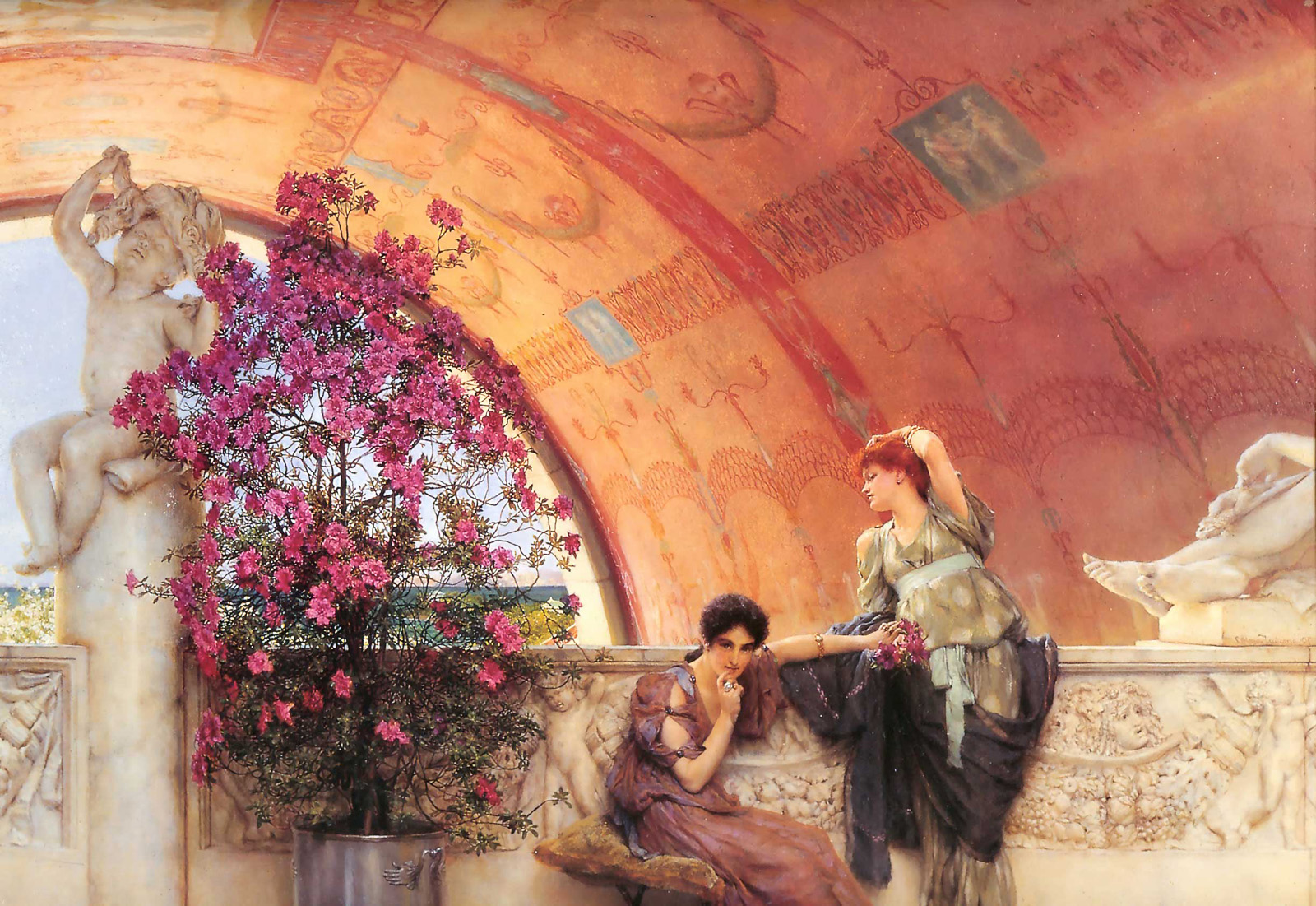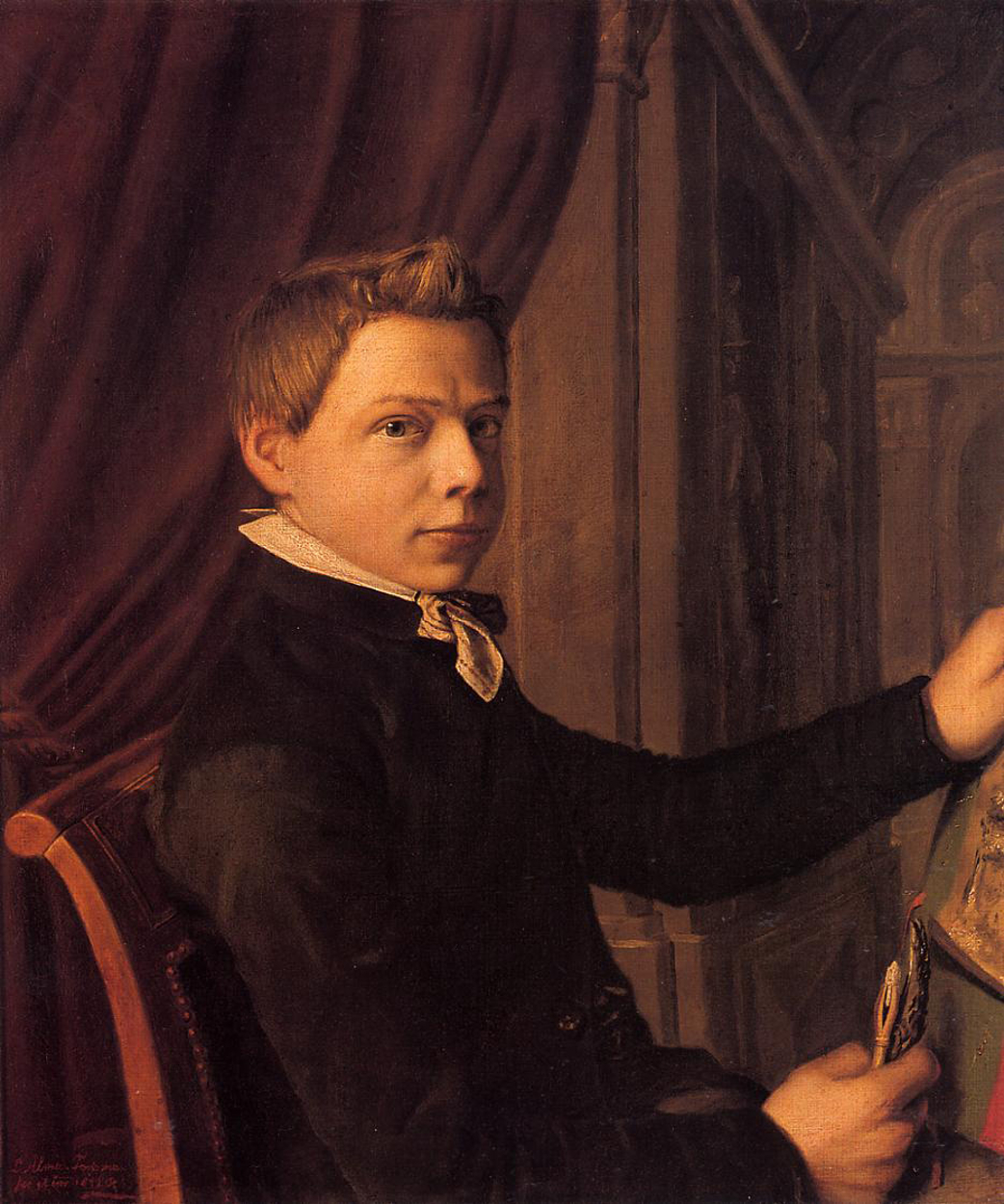



Unconcious Rivals
oil on canvas • 45.1 × 62.8 cm
Unconscious Rivals is an example of artist Sir Lawrence Alma-Tadema’s interest in depicting a romanticized (and, it should be noted, very Victorian) interpretation of ancient Rome. And while the setting of this painting - with its magnificently decorated barrel vault in the background - does not conform to any existing Roman models, Lawrence Alma-Tadema has succeeded in creating an atmosphere that evokes the splendor of Rome quite beautifully.
The meaning and significance of the painting’s title are not immediately obvious, but one can guess that the artist is referring to the idea that the two women represented in the work are somehow rivals for the attention of an unseen lover. However, the details in Unconscious Rivals are revealing. On the far left there is a statue of Cupid (known to the ancient Greeks as Eros) that is based on a sculpture from the Capitoline Museum in Rome. Cupid is of course the Roman god of love and desire, so the inclusion of this statue suggests love and its abundant pleasures.
In addition to Cupid, there is also a subtle reference to something with which ancient Romans were intimately familiar - gladiators and the gladiatorial games. For on the right side of the painting there is a partially visible statue that portrays a reclining gladiator. Virile gladiators were often the celebrities of the day, and they were much adored especially by female aristocrats. It is therefore possible that Lawrence Alma-Tadema was hinting at a love triangle involving the pair of women and a handsome gladiator.
 Lawrence Alma-Tadema
Lawrence Alma-Tadema